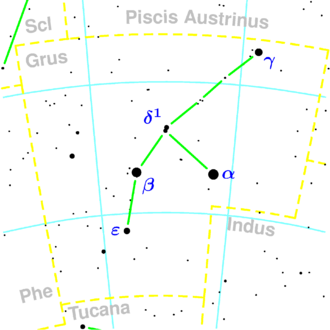NGC 7213
| Galaxy NGC 7213 |
|
|---|---|

|
|
| Photo from the Hubble Space Telescope | |
| AladinLite | |
| Constellation | crane |
|
Position equinox : J2000.0 , epoch : J2000.0 |
|
| Right ascension | 22 h 09 m 16.3 s |
| declination | -47 ° 10 ′ 00 ″ |
| Appearance | |
| Morphological type | SA (s) 0 ^ 0 / LINER / Sy1.5 |
| Brightness (visual) | 10.1 mag |
| Brightness (B-band) | 11.0 mag |
| Angular expansion | 3 ′, 1 × 2 ′, 8 |
| Position angle | 124 ° |
| Surface brightness | 12.3 mag / arcmin² |
| Physical data | |
| Redshift | 0.005839 ± 0.000019 |
| Radial velocity | 1750 ± 6 km / s |
|
Stroke distance v rad / H 0 |
(77 ± 6) · 10 6 ly (23.6 ± 1.7) Mpc |
| history | |
| discovery | John Herschel |
| Discovery date | September 30, 1834 |
| Catalog names | |
| NGC 7213 • PGC 68165 • ESO 288-043 • IRAS 22061-4724 • 2MASX J22091625-4709599 • SGC 220609-4724.7 • GC 4757 • h 3924 • AM 2206-472 • HIPASS J2209-47 | |
NGC 7213 is a spiral galaxy of Hubble type Sa in the constellation Pegasus at the northern sky . It is estimated to be 77 million light years from the Milky Way and about 75,000 light years in diameter.
In the same area of the sky is u. a. the galaxy IC 5170 .
The object was discovered on September 30, 1834 by the British astronomer John Herschel .
